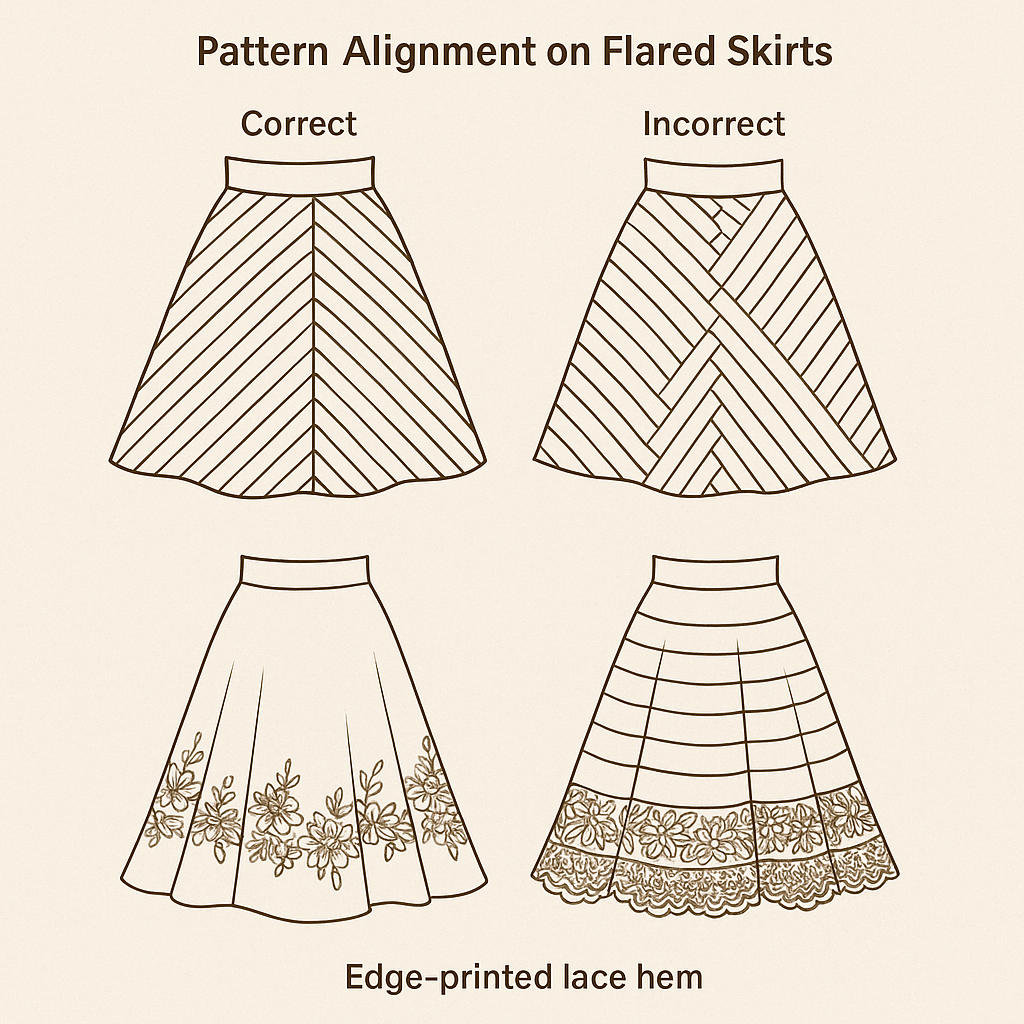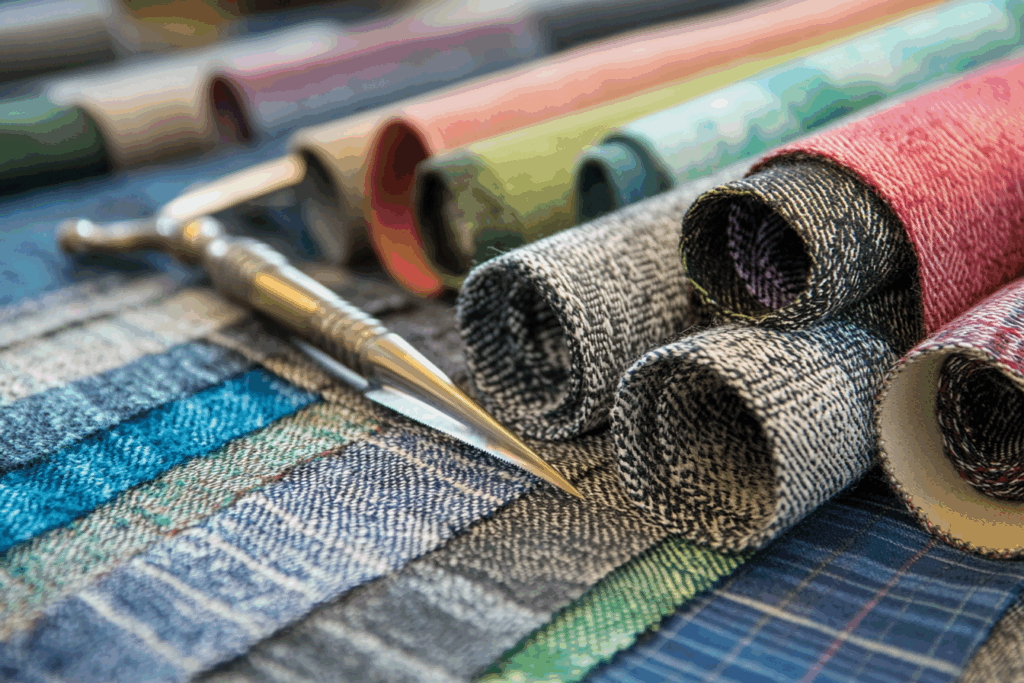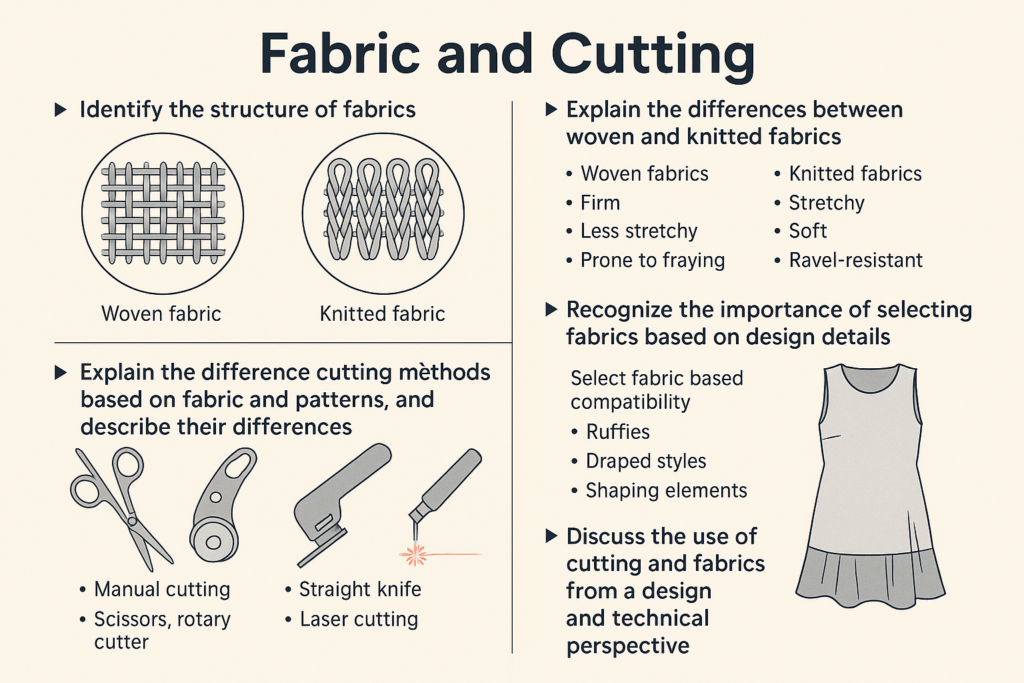Flared Skirts and Pattern Placement: A Guide to Proper Cutting Techniques
Flared skirts are a staple in women’s fashion, celebrated for their movement, femininity, and design versatility. However, their elegance heavily depends on precise pattern placement, particularly when working with striped, printed, or edge-detailed fabrics. In this blog, we’ll explore how proper layout and cutting instructions enhance the design, prevent pattern distortion, and reduce production issues.
🌸 Understanding Flare in Skirts
A flared skirt typically widens out from the waist or hips, offering extra fullness. This can range from a subtle A-line silhouette to a dramatic circular hemline. The greater the flare, the more careful you must be with fabric orientation and grain alignment.
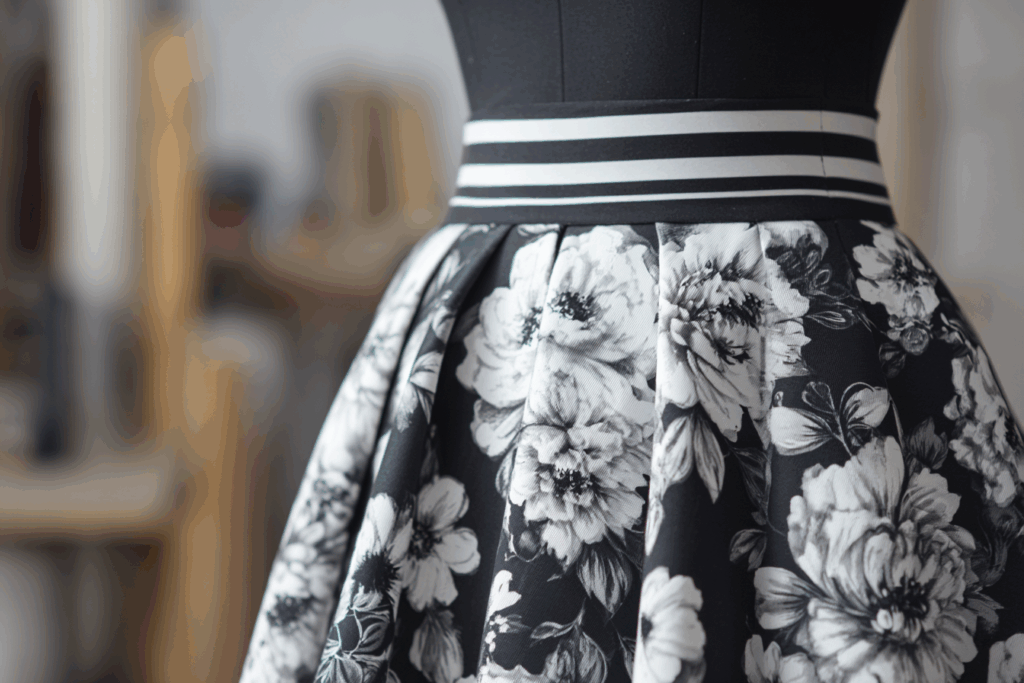
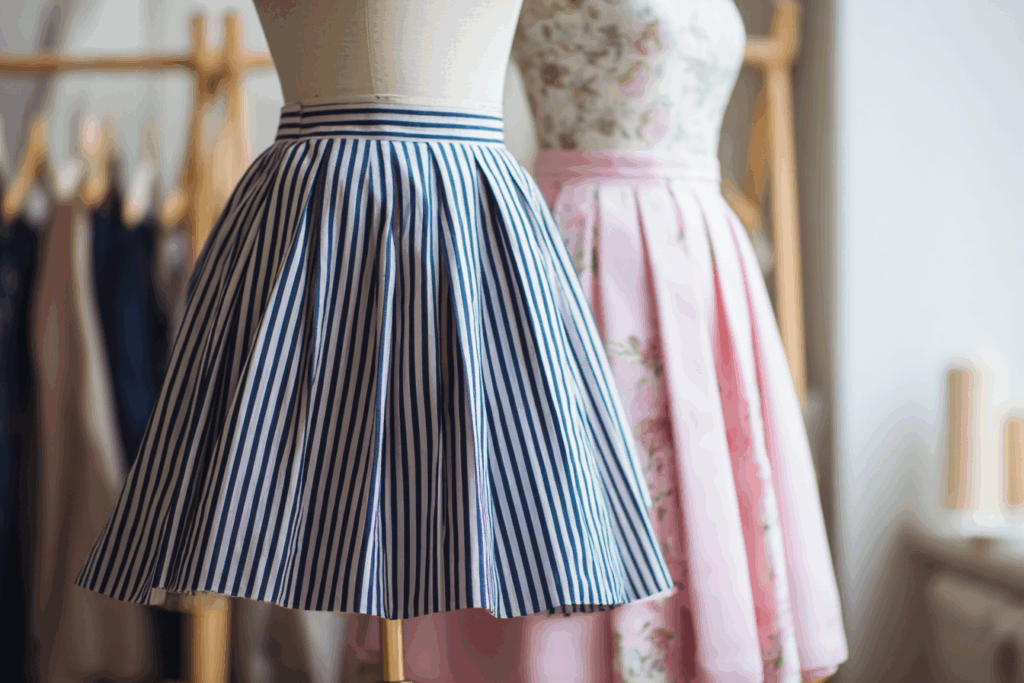
🧵 How Pattern Placement Affects Visual Design
For striped or directional fabrics, poor pattern alignment at the side seams can create uneven or awkward visual effects. For example:
- Herringbone or chevron seams may form unintentionally if stripes are misaligned.
- Asymmetrical flares can appear if the stripe flow breaks at the seams.
- Unexpected “pattern crashes” at the hem can compromise the clean look of a design.
These effects can either enhance or undermine the garment’s appearance depending on how they are planned.
✂️ Best Practices for Cutting Flared Skirts
To ensure consistency and professional results:
- Always align directional prints or stripes across seams to create a harmonious flow.
- For heavily flared skirts, bias cutting may be required to improve drape, especially with flowing fabrics like chiffon or crepe.
- In slightly flared styles, anticipate sudden drop-off in prints near the seams. Provide clear cutting diagrams in your tech pack.
🧷 Illustrated cutting instructions are essential to guide factories on where to align visual elements, especially in production runs with patterned fabrics.
🌼 Using Edge Prints for Creative Effects
Edge-printed fabrics, such as floral borders or lace patterns, can add sophistication when strategically placed. Consider these tips:
- Lace or floral stripes near the hem give a skirt an ornamental finish.
- Avoid cutting through border prints unless the design intentionally calls for deconstruction.
- For handwoven edge laces (e.g., Figure C in our upcoming diagram), use pleats or darts to shape without disrupting the visual flow.
Designers often use flared shapes to showcase selvedge prints, turning technical cutting into an opportunity for visual storytelling.
🪡 Tech Pack Recommendations for Flared Skirts
For production-ready garments:
- Add a cutting instruction page highlighting grain direction and fabric design elements.
- Label stripe matching points at seams.
- Include warnings for minimum yardage needed when using one-way or selvedge prints.
- For large flares, test layout with CAD software to minimize fabric waste.
📌 Conclusion
The beauty of a flared skirt isn’t just in the design—but in the detail. Correct pattern placement, understanding fabric behavior, and clear cutting instructions ensure that each garment is visually consistent, production-friendly, and meets high-quality standards. Whether you’re creating a couture piece or a commercial skirt line, mastering these technical elements will elevate your garment’s impact.
